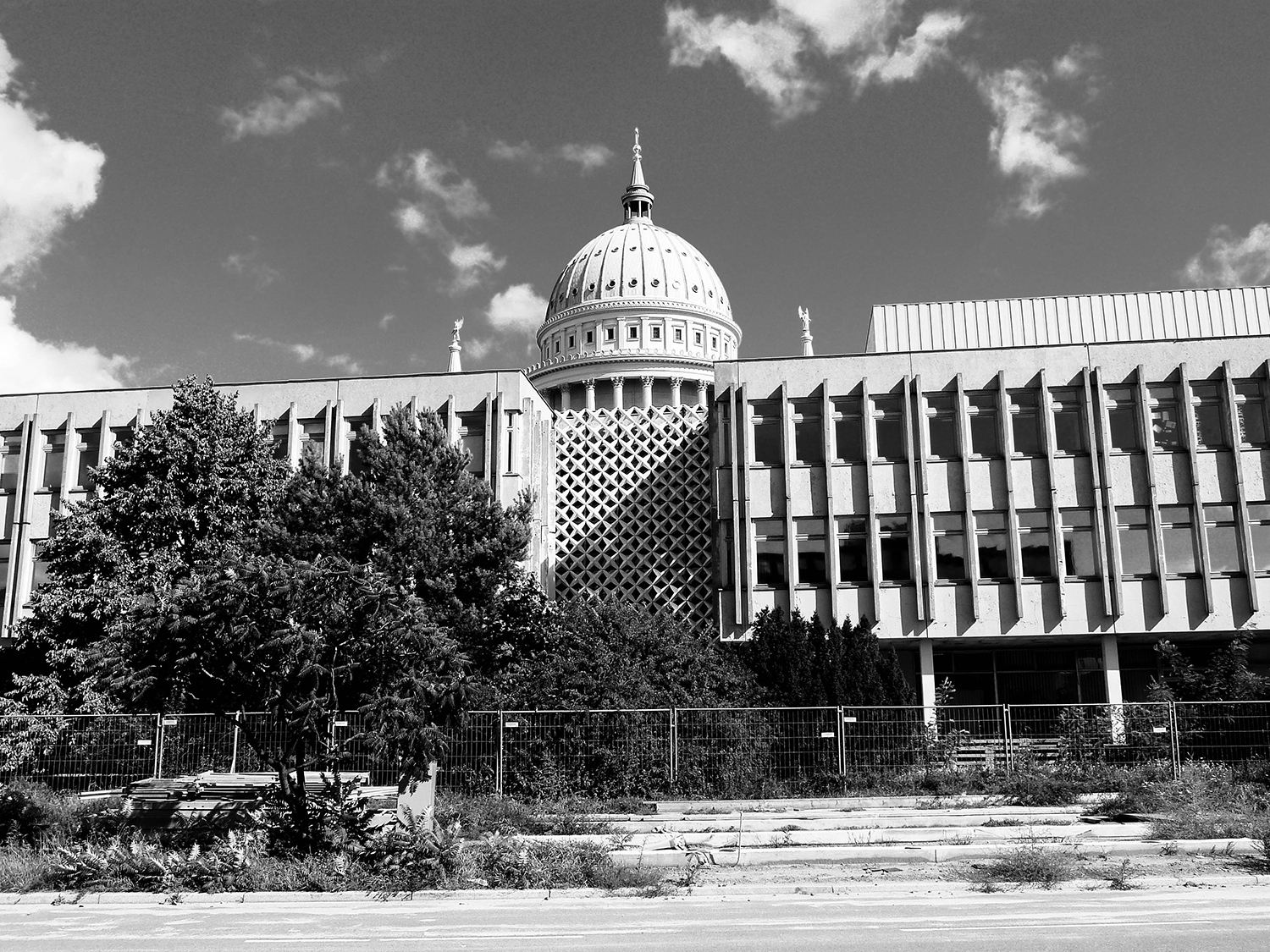Potsdam trompe l'oeil
With the camera positioned just so, this neoclassical cupola appears to sit proportionally atop a modernist base in the heart of Potsdam. It kind of works.
They are, though, two separate buildings. The dome belongs to the St. Nicholas Church, which dates from the mid 19th Century when Potsdam was part of the Kingdom of Prussia. In the foreground is the facade of the Institut für Lehrerbildung 'Rosa Luxemburg', a teacher training academy built in the 1970s when Potsdam was part of the German Democratic Republic (East Germany).
This view no longer exists.
A 2010 decision by Potsdam city officials ordered the dismantling of the Institut, which duly occurred in 2017. It is to be replaced by a new structure that will recreate the facade of Prussian palace while masking a contemporary interior – the rationale being to create an architecturally harmonious setting on a key central square.
Sound familiar? Berlin also recently opted to remove the DDR-era modernist Palast der Republik (itself built on the site of a Prussian palace the East German government had demolished for its symbolic associations with the imperial past) and erect a simulacrum Prussian palace (the Humboldt Forum project).
These decisions – which evoke one history while erasing another – are a continuation of Germany's highly contested reckoning with its past, as Brian Ladd explores in his excellent book, Ghosts of Berlin: Confronting German History in the Urban Landscape. For some, the frequent consensus for neoclassical lines among politicians and urban planners is a canny dodge reflecting a certain conservatism – it seeks to escape the extremes of the 20th Century (including their manifestations in architecture) by locating historically safe ground in the perceived unity of the imperial Germany of the Kaisers. But that preference is a hagiographic illusion (the clue is in the word 'imperial'), and opts for an allegorical amnesia over a challenging architectural response to the complexity of the German experience.
There is something incredibly uninspired (not to say regressive) about rebuilding long-gone imperial palaces on sites where the ground is both hallowed and historically contested. And as beautiful as neoclassical facades may be (and Berlin and Potsdam have plenty of them to show off), as 21st Century new-builds they are dated symbols that fail equally at capturing nuanced historic legacy and at presenting the forward-looking aspects of contemporary German society.
Potsdam, Germany
September 2010
Panasonic DMC-TZ10
